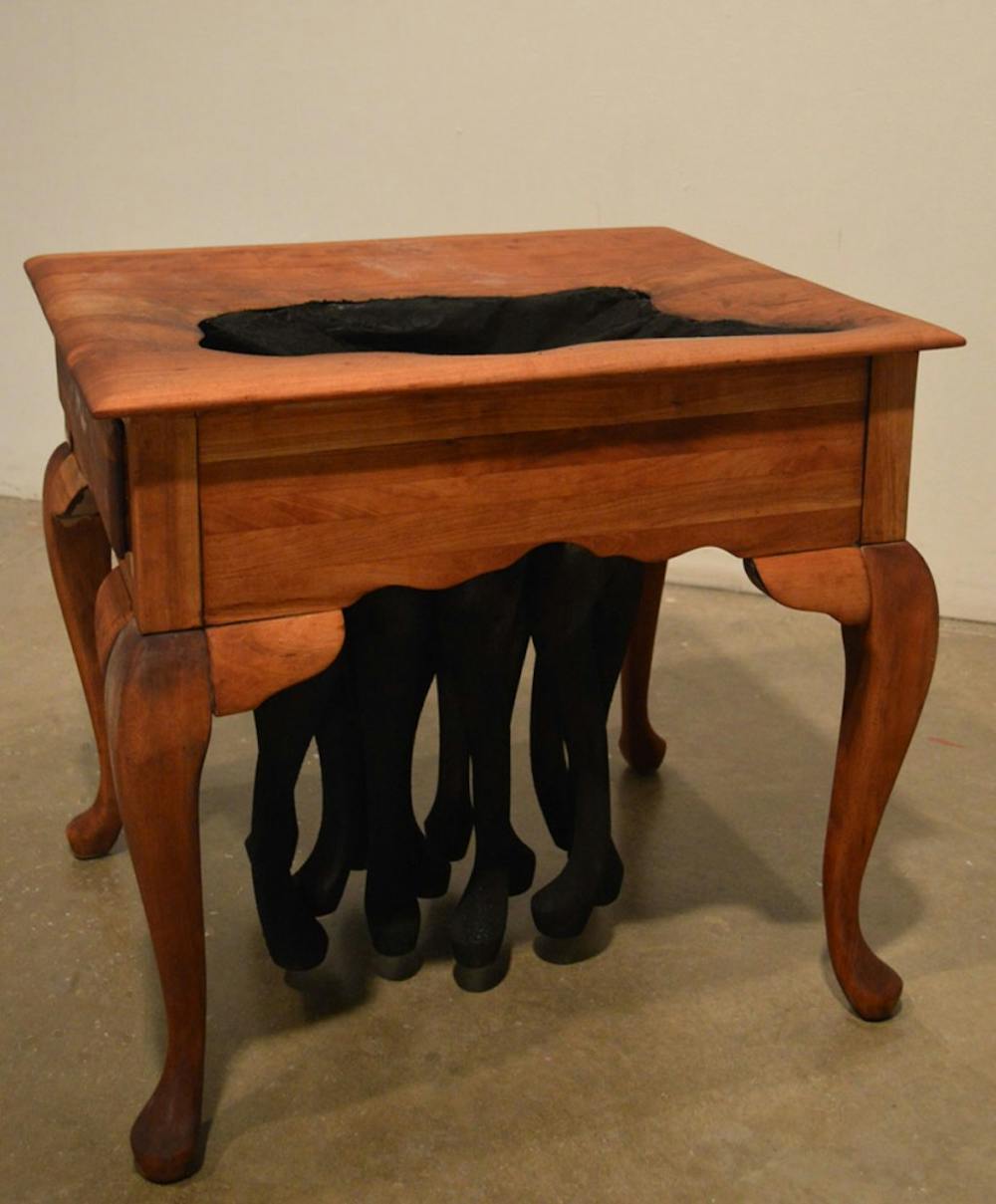Meg Stein, a Master of Fine Arts student at UNC, was always interested in drawing and “making small things.” She first began to call herself an artist when she joined an artist collective in Durham and began creating large installations.
Her work, on display in the John and June Alcott Gallery at the Hanes Art Center, uses furniture as a metaphor for human loneliness. Her exhibit is a part of a nine-week exhibition series for second-year MFA students. She combines domestic and found objects to create a surreal reaction to furniture’s ability to nurture while symbolizing human absence.
Staff writer Ally Levine spoke with Stein about her realization of the metaphorical qualities of furniture.
Daily Tar Heel: What is your current artistic focus?
Meg Stein: Right now, I’m thinking a lot about the surrealists and what they were doing. I’ve been thinking a lot about the home and domestic spaces and how a lot of the times our homes are these big spaces that are filled with all these objects that are there to function for us and are referencing our bodies but aren’t actually anything — they’re just empty objects. They can’t think, they can’t feel, they’re not companions, they’re not people. There’s kind of a loneliness that I see in furniture.
I’m using these different objects as a metaphor to talk about loneliness. I think that they’re interesting objects to use in that way because they are designed with our bodies in mind. A chair, for example, is designed to support our bodies. It’s back is curved to fit our backs. Without a human body, a chair has no purpose. When I see an empty chair, I see the absence of a human in addition to seeing the chair. Furniture pieces and objects can become placeholders for empty humans. There are interesting implications by putting that conversation in the home specifically.
DTH: What should people expect to see in your exhibit this week?
MS: The Alcott Gallery is a rectangular space, and I’ve inserted some cues that connect people to symbols in a domestic space. There are glass walls in the gallery, and I’ve hung curtains there as a way to anchor the space in a domestic realm. Inside there are several larger sculptures that are a combination of larger objects that you would find in a home and domestic furniture combined with different formal aspects. Many sculptures are resting on the floor so, again, there is a reference to more of a home space than on pedestals. All of the works can be read as separate pieces, but they’re all referencing this domestic realm and they’re using a lot of formerly surrealist strategies.
DTH: Why is it titled “Proximity to Permanence”?
MS: Once you start comparing a chair to a human, that chair is giving something back to you — it’s giving you support while you sit down, it helps you relax. Those are aspects that, while they aren’t companionship, they’re similar in a way to some sort of human companionship. When you hang out with a friend, that friend makes you feel better and supports you. The function of the chair becomes a metaphor for some of the things that a human companion could give you. Furniture, in a way, is giving a proximity to permanence. It is giving a proximity to stability or certainty or all of these things that we’re longing for in a similar way that a human friendship is. A human friendship is never certain, but there is a proximity to permanence there. There is a closeness to stability.
DTH: What do you hope people will take away from the exhibit?
MS: I hope that people can connect to the work — that they feel something. I’m also really interested in the possibility that my work and especially the way that I juxtapose illogical pairings of different objects, might reveal some sort of hidden emotional or psychological response. One other thing that I hope that people will take away from it is a sense of mystery. There are a lot of suggestions of phenomena in my work. I hope that there’s a little bit of mystery about the pieces for people.
DTH: What do you plan to do with your MFA?
MS: I definitely want to keep teaching. I’ve been enjoying teaching. I taught two undergrad sculpture classes this year and I’ll be teaching this summer. My main goal is to do a lot of residencies. I want to do a lot of shows. In short, I want to use my MFA and use the knowledge that I’ve gained and all these people that I’ve met to build a career for myself as a full-time artist where that is my profession.
arts@dailytarheel.com
To get the day's news and headlines in your inbox each morning, sign up for our email newsletters.





